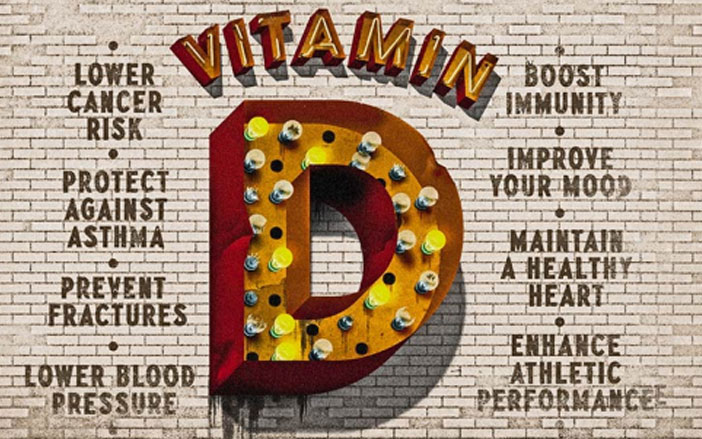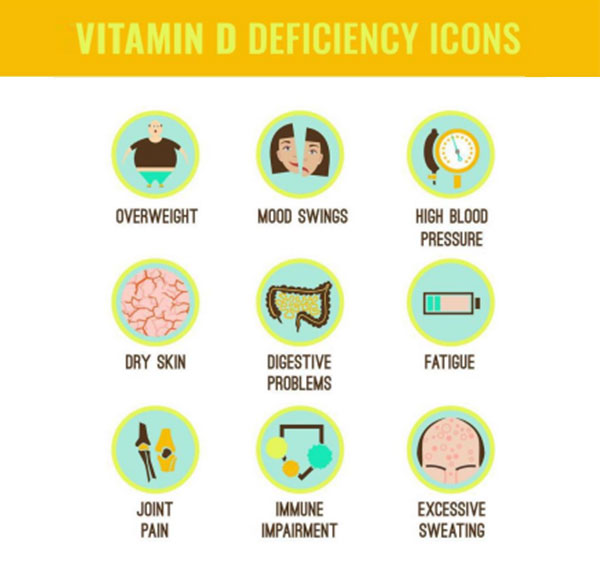Despite its name, Vitamin D is not a vitamin. Instead it is a hormone that promotes the absorption of calcium in the body. Aside from a few foods, it is hard to find in the average diet. In the presence of ‘Ultraviolet B’ rays, our skin can produce our own from a certain kind of cholesterol.
-
Risk Factors for Deficiency
- Diet – Not having enough Vitamin D rich foods
- Lifestyle – Having less exposure to sunlight, ill health, lack of outdoor spaces increases the risk. People who use a lot of sunscreen are at increased risk of deficiency.
- Pollution – Highly polluted areas block UVB rays without which the skin cannot produce vitamin D.
- Age – Increasing age decreases the body’s ability to produce Vitamin D.
- People with darker skin need more sunlight exposure to produce Vitamin D.
- Diseases such as Crohn’s, celiac disease etc which decreases absorption of Vitamin D from the diet also increase the risk of deficiency.
- Smoking
- BMI greater than 30
- Kidney and liver diseases



